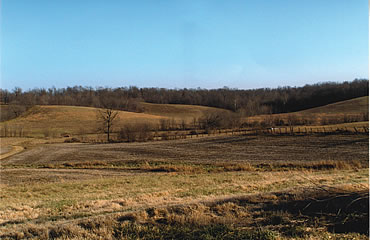You can still fill your tag with a late-season blackpowder hunt.
I was up a ladder stand at the end of an oak-studded finger on opening day of Kentucky’s December blackpowder season. The doe walked cautiously along the bottom of the steep ridge, but I saw her 30 yards from my stand and I clicked off the inline muzzleloader’s safety. At the click, the doe stepped into a heavy blowdown. I watched closely, afraid she would spook. She finally stuck her head out, took a couple of steps and gave me a small opening. The .50-caliber, 275-grain bullet and Triple 7 powder did their jobs; I had some fresh venison for the year.
Kentucky and other states offer blackpowder seasons during the late fall and winter months. If you haven’t filled your buck tag by then, the late season is a great opportunity. The second rut is often in progress, and bucks are still cruising for any does that might come into estrus. I found fresh scrapes and rubs that bucks had made during my hunt in mid-December while I was hunting to fill my bonus doe tag.
Hunting pressure is usually light, as most hunters have either filled their tags and freezers or quit for the season, although hard-core cases will stay out until the last day. I enjoy being in the woods during the winter months. The air is fresh and cold, and I can see for longer distances. I also enjoy the exercise, walking and glassing.
 If you plan to hunt during the late blackpowder season, be prepared for a variety of weather conditions. In Kentucky, the weather can be relatively mild, with temperatures in the 40s to 70s, or brutally cold with sleet and snow. Insulated boots, gloves, hat and warm socks are a necessity. Cover and protect any exposed skin to prevent frostbite in severe weather. Safety first: Before you use a tree for your stand, be sure it hasn’t been damaged by snow or ice. Use a full-body safety harness and tie off properly.
If you plan to hunt during the late blackpowder season, be prepared for a variety of weather conditions. In Kentucky, the weather can be relatively mild, with temperatures in the 40s to 70s, or brutally cold with sleet and snow. Insulated boots, gloves, hat and warm socks are a necessity. Cover and protect any exposed skin to prevent frostbite in severe weather. Safety first: Before you use a tree for your stand, be sure it hasn’t been damaged by snow or ice. Use a full-body safety harness and tie off properly.
Remember, by now the deer have been hunted hard for several months. They might be deeper in the woods and bedding in heavy cover during the day. In severe cold, deer can move any time during the day in search of food, so try to stay out there all day.
A key to finding deer during the late seasons is finding the food sources the deer are using. This could be unharvested crops, green fields, oak stands with acorns under snow or leaves, honeysuckle or other browse. Deer need calories to generate heat to survive the cold months. Search for the food sources and hunt them wisely.
Deer hunting during the late season can be fun and rewarding. Hunting pressure is light, and the deer can become predictable. They also can be concentrated near the limited food sources, which makes finding them easier. So have fun and enjoy white smoke and winter whitetails.
Read Recent Articles: • Rubbin’ Up the Wrong Tree: Not all rubs are created equal. Here’s how to determine which you should pay attention to.
• Lessons Learnt: Following are a few pearls of wisdom from a professional deer manager and hunter.
• Counting Points: Do state-mandated antler restrictions make a positive impact on herd health?
This article was published in the Winter 2008 edition of Buckmasters Whitetail Magazine. Join today to have Buckmasters delivered to your home.